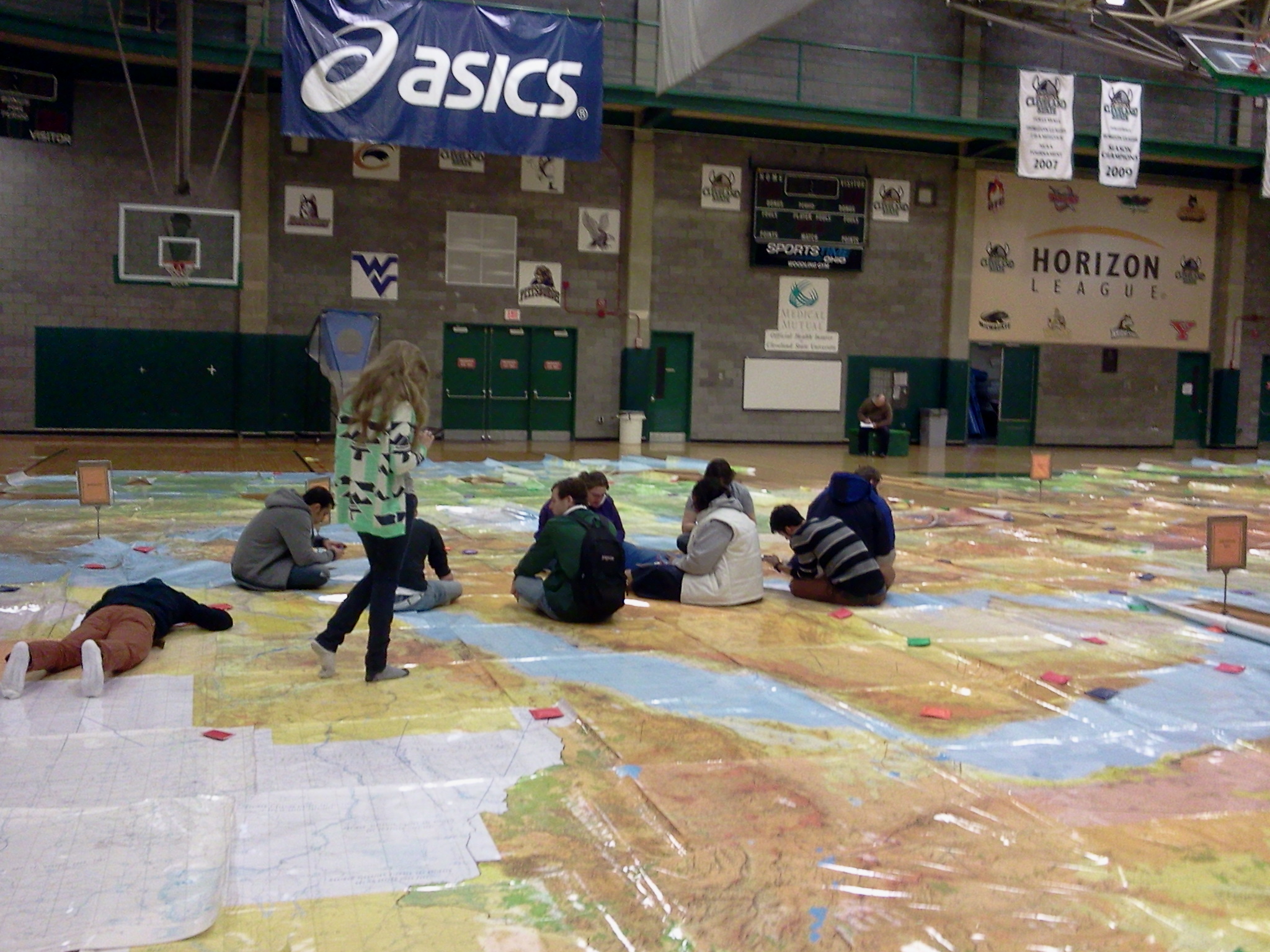The concepts now associated with Ohio’s Geography standards for high school education greatly emphasize the themes found within Merriam-Webster’s current definition of globalization. Now, instead of simply educating students about the physical landscape of the Earth (and the various scientific factors included within that school of thought), teachers are also being tasked with the lofty goal of helping students to understand the interconnectedness of the world around them, and how human behavior impacts that connection on a daily basis. Special attention within contemporary high school Geography courses is being placed upon how human movement and migration affect not only the processes of globalization and urbanization around the world, but also on how such movement can affect the physical environment as well.
According to the late Harm De Blij (Geographer and author), the world is on its way to becoming a more “flat” place through the process of globalization. “Notions of a flat world raise expectations of growing access and increasing opportunity that are mantras of globalization but are all too often at variance with reality. Powerful forces, natural as well as human, slow the flattening process in a contest that will determine the future of the planet. Globalization may hold the promise proponents proclaim, but it also inevitably creates inequities that can bring out the worst in human nature.” (De Blij, 2009, x-xi) In order to better prepare the young people whom we educate to become more globally-conscious individuals, it is now becoming essential for us to examine the living conditions and behavioral patterns of societies all over the globe. Furthermore, teachers are now responsible for helping students to examine how the living conditions of citizens around the world can contribute to patterns of inequality in regards to economy and politics.
One such resource that can help educators of current Geography courses is Gapminder, an online database of statistical world data developed by Hans Rosling (Swedish statistician, professor and public speaker) to help individuals develop a more “fact-based worldview.” Rosling has analyzed factors ranging from the rate of unemployment for those aged 25-54 to the mortality rates of children under the age of five to present such information in a way unlike most have seen before. Rosling helps the public discover the “beauty of statistics” by graphing data in a colorful and inventive chart that tracks progress and change over time, all with the intention of helping people to recognize the patterns of inequality that prevent globalization from occurring all over the planet (click here for an example of a Gapminder presentation). Within the context of a high school Geography course, teachers can use resources like Gapminder to encourage spatial thinking and skills within their students, in addition to educating them about how environment and society are interconnected. Thus, teachers are now able to use the charts and videos developed on Gapminder to show their students statistical information that will not only help them think about how their actions can affect individuals all over the globe, but also how patterns of inequity have developed over time (thus encouraging historical thinking!)
According to author and scholar Daisy Martin (who co-wrote Reading Like a Historian with Sam Wineburg), there are five main components that comprise the definition of historical thinking: multiple accounts and perspectives, analysis of primary documents, sourcing, understanding historical context, and claim-evidence connection. While many may believe that Geography and historical thinking are not closely linked, themes found within the standards for high school Geography courses emphasize concepts such as change over time, historical patterns of human movement, and even historical events of physical nature (such as major weather or climate change events). Analyzing multiple accounts and perspectives of human migrations over time and understanding the historical context of human behavior and various global events not only help students maintain a better understanding of material within their Geography courses, but also help them to become more well-rounded students as they link their course content to other related disciplines.
Be on the lookout this week for a comprehensive list of Geography resources that promote the use of technology and historical thinking that you can use in your classroom!
Works Cited:
De Blij, Harm. The Power of Place. New York City: Oxford University Press, 2009.
Wineburg, Sam, Daisy Martin and Chauncey Monte-Sano. Reading Like A Historian: Teaching Literacy in Middle and High School History Classrooms. New York City: Teachers College Press, 2012.
Martin, Daisy. “What is Historical Thinking?”. National History Education Clearinghouse. January 10, 2011. http://teachinghistory.org/nhec-blog/24434.
Merriam-Webster Dictionary, online ed., s.v. “globalization” http://www.merriam-webster.com/dictionary/globalization

